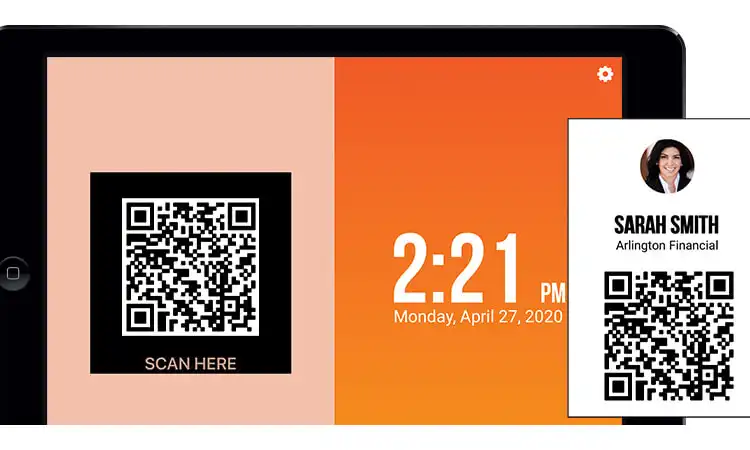In today’s fast-paced business environment, time is money. That’s why it’s essential to have an efficient and accurate time-tracking system in place. One solution is to use a QR code time clock, allowing employees to clock in and out by simply scanning a QR code with their smartphone. In this guide, we’ll show you how to create an employee QR code time clock in just a few steps. By combining research and practical insights, we’ll provide you with all the information you need to set up a QR code time clock system that’s right for your business. Let’s get started!
What is a QR Code Time Clock?
QR codes have become increasingly popular in recent years, especially with the rise of contactless services and operations due to COVID-19. Although they were first invented in the 1990s, businesses and consumers realize the value of these two-dimensional black-and-white barcode alternatives.
QR codes can store a significant amount of data and provide instant access to a wealth of information. As a result, they can be used for various purposes, such as advertising your brand, processing payments, and collecting important data about your current and prospective customers. Additionally, QR codes can be used to enable employees to clock in and out of work with a simple scan, recording time and attendance with a global positioning system (GPS) tag.
QR code time clocks offer businesses a convenient and efficient way to track employee time and attendance. By simply scanning a QR code, employees can clock in and out of work, and their time and location data are automatically recorded. This eliminates the need for traditional time clocks or manual timekeeping methods. It makes it easier for businesses to track employee hours and ensure accurate payroll processing.
Using a QR code Time Clock Benefits
QR code time clocks are a modern and efficient way for businesses track employee time and attendance. By using a QR code that employees can scan with their mobile devices, businesses can eliminate the need for traditional time clocks and manual timekeeping methods. Here are some of the key benefits of using a QR code time clock:
- Improved accuracy: QR code time clocks can help improve accuracy by eliminating the need for manual data entry. By automating the timekeeping process, businesses can reduce the risk of errors and ensure that employee time data is recorded accurately.
- Increased efficiency: With a QR code time clock system, employees can clock in and out quickly and easily using their mobile devices. This can help reduce wait times and eliminate the need for long lines at traditional time clocks, improving overall efficiency and productivity.
- Contactless option: In today’s environment, businesses are increasingly looking for ways to reduce human contact and minimize the risk of germ transfer. QR code time clocks offer a contactless option for employees to clock in and out using their own mobile devices, promoting a safer and healthier workplace.
- Reduced administrative costs: By automating the timekeeping process, businesses can reduce the time and resources required to manage employee time and attendance. This can help reduce administrative costs and save time for other essential tasks.
- Customizable: QR code time clocks can be customized to meet the specific needs of businesses. This includes features such as notifications for managers, reminders for employees to clock in or out, and integration with payroll processing systems.
How Does QR Code Time Clock Work?
First, create an online employee timesheet form with fields for clocking in and out. This can be done using a variety of online tools and software programs. Once the form is set up, you can generate a QR code that links to the form. The QR code can be printed and placed in various locations around the office, such as near the entrance, in bathrooms, or in the cafeteria. You can also add the code as an icon to everyone’s desktop screen for easy access.
Employees simply hold up their Android or iPhone camera to the QR code when they arrive at work. This will take them directly to the employee timesheet form, where they can select their name from a dropdown menu and enter there in and out times. There’s no need to wait in line to punch in a pin code or scan their fingerprints manually. It makes the process quick and easy for both employees and managers.
Creating a QR code time clock is relatively simple, especially with the right software. Many online tools and software programs offer customizable templates for creating QR codes and options for tracking and managing employee time and attendance data. Some tools can even send notifications to managers when employees clock in or out, helping to streamline the process further.
Read more: How to Add a QR Code to a Flyer (Guide)
How to Make a QR Code Timing Clock
You will need an online QR code generator tool and a web-based timesheet form to make a QR code timing code. Follow these steps:
Step 1: Choose an Online Time Clock Tool
Choosing the right online time clock tool is crucial to creating an effective QR code time clock system for your employees. There are many options available, each with its own features and benefits. To find the best fit for your business, evaluate your needs and priorities.
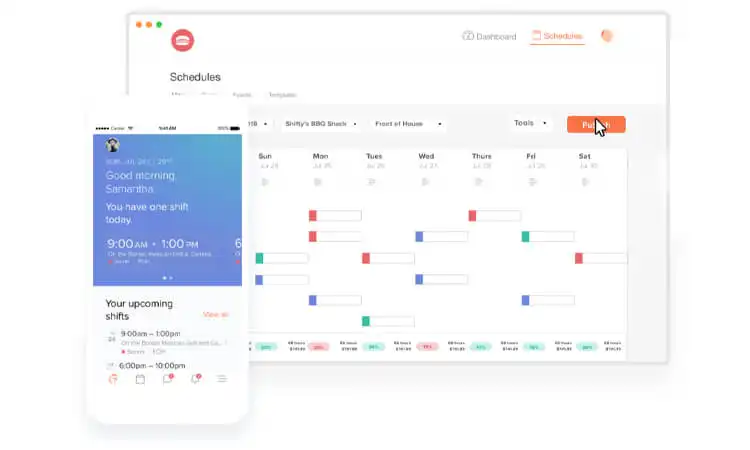
Consider the size of your workforce and the number of locations where employees will need to clock in and out. Look for a tool that offers reliable and secure data storage and reporting capabilities that can help you monitor employee attendance and productivity. Additionally, consider the tool’s cost and any additional fees for features such as QR code generation or support.
Read reviews and ratings from other users to understand the tool’s reliability, ease of use, and customer support. Look for a tool that offers a user-friendly interface and training and support resources to help your employees get up and running quickly.
Some popular online time clock tools that offer QR code generation include TSheets, TimeClock Plus, and Homebase. These tools offer a range of features and pricing options to fit businesses of all sizes and types.
Step 2: Set Up Your Employee Timesheet
The employee timesheet is the heart of your QR code time clock system, where employees will enter their clock-in and clock-out times. When setting up your timesheet, consider the information you need to gather, such as employee names, clock-in and clock-out times, and any breaks or overtime. You can customize your timesheet to fit your business needs by adding fields for job codes or project tracking.
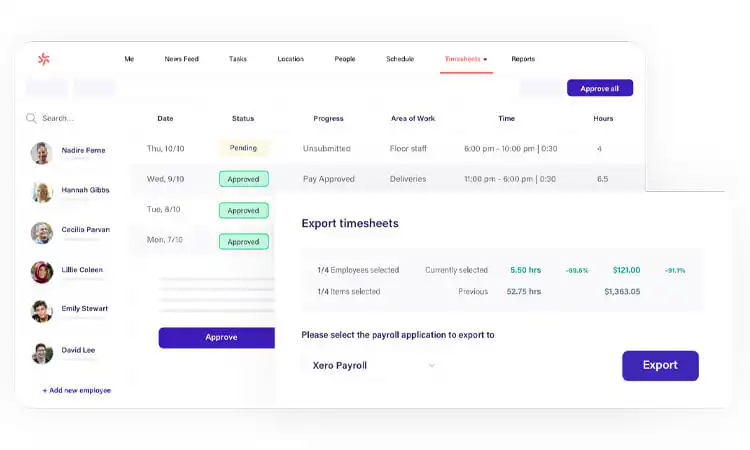
Many online time clock tools offer customizable timesheet templates to use as a starting point. Look for a template that fits your business needs and complies with labor laws. Once you’ve set up your timesheet, test it to ensure it’s working as expected.
It’s also essential to ensure that your timesheet is accessible to your employees. You can provide access through a web link or by embedding the form on your company’s website. Additionally, consider providing instructions or training materials to help your employees understand how to use the timesheet and the QR code time clock system.
To ensure the accuracy of your timesheet, consider implementing features such as automatic overtime calculation or rounding rules. This can help you stay compliant with labor laws and reduce the risk of errors or disputes.
Finally, be sure to inform your employees of any policies or guidelines related to time tracking, such as how to report missed clock-ins or how to request time off. By setting up a clear and accessible employee timesheet, you can ensure that your QR code time clock system is accurate, efficient, and compliant with labor laws.
Read more: 12 Great Ideas for Using QR Codes in the Classroom
Step 3: Generate a QR Code for the Timesheet
Now that you have an online timesheet form set up, the next step is to generate a QR code that links to the form. QR codes are two-dimensional barcodes that can be scanned using a smartphone camera. It provides a quick and easy way for employees to access the timesheet form.
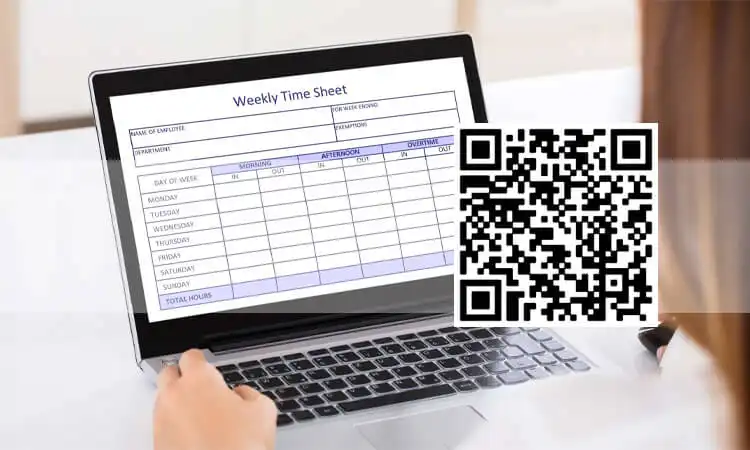
You can use an online QR code generator tool to generate a QR code. Many online time clock tools offer built-in QR code generation features, making creating a code that links directly to your timesheet form easy. When generating your QR code, be sure to test it out to ensure that it’s working properly and that it’s large enough to be easily scanned by your employees’ smartphones.
Step 4: Display the QR Code in Your Workplace
To make it easy for employees to clock in and out using the QR code time clock system, you’ll need to display the QR code in a visible and accessible location in your workplace. Here are some tips for displaying the QR code:

- Choose a high-traffic area: Consider placing the QR code in a location that employees pass by frequently, such as near the entrance or in a break room. This makes it easy for employees to scan the code and access the timesheet form.
- Ensure visibility: Make sure that the QR code is easily visible and not obstructed by other objects. You can print the code on a sticker or poster and affix it to a wall or other surface.
- Test the code: To ensure that the QR code is easily scannable, test it with different devices and lighting conditions. Be sure to choose a size appropriate for the distance between the code and the scanner.
- Ensure security: Choose a secure data storage and encryption tool to protect your employees’ personal information.
By displaying the QR code in a visible and accessible location, you can provide a touchless and hygienic solution for tracking employee time and attendance. This can help you reduce the risk of errors and improve the accuracy of your time-tracking system. Additionally, a QR code time clock system can save your business time and money by streamlining time-tracking processes and reducing administrative costs.
Step 5: Train Employees on How to Use the QR Code Time Clock
After you’ve set up your QR code time clock system and displayed the QR code in your workplace, the next step is to train your employees on how to use the system. This can ensure that your employees understand how to clock in and out and use the system correctly.
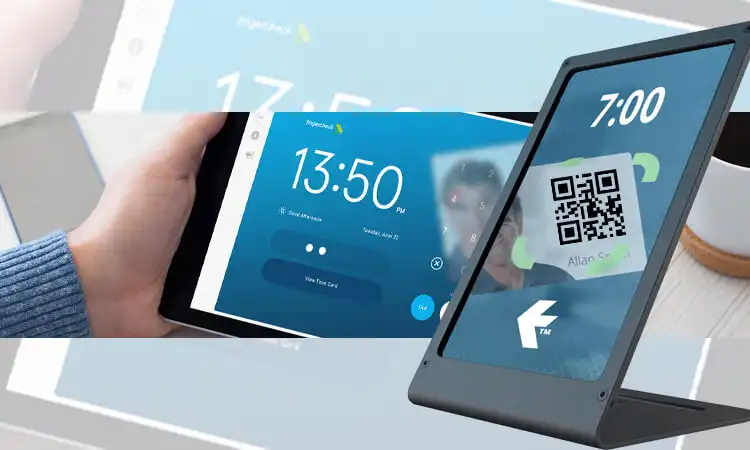
Consider providing training materials such as a user guide, a video tutorial, or a training session. Be sure to cover the basics of scanning the QR code, accessing the timesheet form, and entering clock-in and clock-out times. You can also provide tips on using the system efficiently, such as using the auto-fill feature to save time.
You must let your employees know about any policies or guidelines related to time tracking, such as how to report missed clock-ins or how to request time off. This can help you ensure that your employees follow company policies and know their responsibilities.
When training your employees, be sure to make the process easy and accessible. Consider providing training materials in multiple formats to accommodate different learning styles, such as written instructions and video tutorials. Additionally, be sure to provide support and answer any questions your employees may have.
Read more: QR Codes on Street Signs: Modernizing Cities with Digital Touch
Best Practices for Using a QR Code Time Clock
QR code time clocks offer a convenient and hygienic way for employees to clock in and out of work. Register each employee and provide a unique QR code for their profile to get started. Employees can save the codes as photos or links in their mobile wallets for easy access.
When clocking in or out, employees simply hold up their QR code to a scanner without needing physical contact. Scanners can be mounted on terminals or smartphone apps, and QR codes ensure fast and accurate time tracking.
To ensure the system runs smoothly, provide clear signage to guide employees to the scanner locations and educate staff on proper QR clocking procedures. Consider providing helpful resources for any issues employees may encounter while using the technology.
Regularly validate clock-ins and outs against work schedules and monitor for missed punches, clock adjustments, or other suspicious activity. You can also consider adding additional verification methods such as biometric scans, PIN entries, or management approvals for added security.
Centralize all time and attendance data in one system for easy reporting and compliance with labor laws. Ensure data backups are in place for disaster recovery.
To manage the technology and tracking processes efficiently at a low cost, select an affordable QR time clock solution that scales as your business needs change. Provide simple oversight and maintenance to keep the system running seamlessly daily.
Implementing best practices for QR code time clocks can enhance workplace productivity, reduce administrative burdens, and maintain data integrity while protecting health and safety. Following these guidelines will result in an optimal contactless timekeeping experience for both employees and management.
Implementing a QR code time clock system can offer many benefits to your business. This includes improved accuracy, efficiency, and compliance with labor laws. By following the best practices outlined in this guide, such as setting up a clear employee timesheet, generating a secure QR code, training employees on proper clocking procedures, and regularly validating timekeeping data, you can ensure the success of your system. With the right tools and strategies in place, QR code time clocks can help you streamline your time-tracking processes, reduce errors, and improve productivity in the workplace.
Related Reading:
- Museum QR Code: An Innovative Approach to Engage Visitors
- How to Use QR Codes in Retail: 8 Ways
- 12 Great Ideas for Using QR Codes in the Classroom
About QR Code Time Clock Problem
-
How do QR code time clocks compare to traditional time clock systems?
QR code time clocks are typically more efficient and accurate than traditional time clock systems. They provide a touchless and hygienic solution for tracking employee time and attendance, reducing the risk of errors or delays.
-
Are QR code time clocks more accurate than manual time tracking methods?
Yes, QR code time clocks are generally more accurate than manual time tracking methods. They eliminate the risk of human error and can help reduce discrepancies in time-tracking data.
-
Can QR code time clocks help reduce labor costs for businesses?
Yes, QR code time clocks can help businesses reduce labor costs by streamlining time-tracking processes and reducing the administrative burden on managers. This can help businesses save time and resources.
-
What types of businesses or industries are best suited for QR code time clocks?
QR code time clocks can be used by any business or industry that requires time tracking for their employees. They are particularly well-suited for companies with many hourly or remote workers.
-
How can QR code time clocks help with compliance and labor law regulations?
QR code time clocks can help businesses comply with labor law regulations by providing accurate and reliable time-tracking data. This can help companies to avoid penalties or legal issues related to non-compliance.
-
What security measures should be in place for QR code time clocks?
QR code time clocks should have secure data storage and encryption to protect employees’ personal information. Employers may also consider implementing additional security measures such as biometric scans or management approvals.
-
Can QR code time clocks integrate with other HR or payroll software?
Yes, many QR code time clock tools can integrate with other HR or payroll software, allowing businesses to streamline their time tracking and payroll processes.
-
How can employers ensure employees are properly trained to use QR code time clocks?
Employers can provide clear instructions and training materials such as a user guide, video tutorial, or training session. They can also provide support and answer any questions that employees may have.
-
What are the potential drawbacks or challenges of using QR code time clocks?
Some potential drawbacks or challenges of using QR code time clocks include technical issues or glitches, employee resistance to new technology, and the need for regular system updates and maintenance.
-
What features should I look for when selecting a QR code time clock tool?
When selecting a QR code time clock tool, businesses should consider secure data storage and encryption, a user-friendly interface, integration with other software, and customizable settings for overtime and rounding rules.


